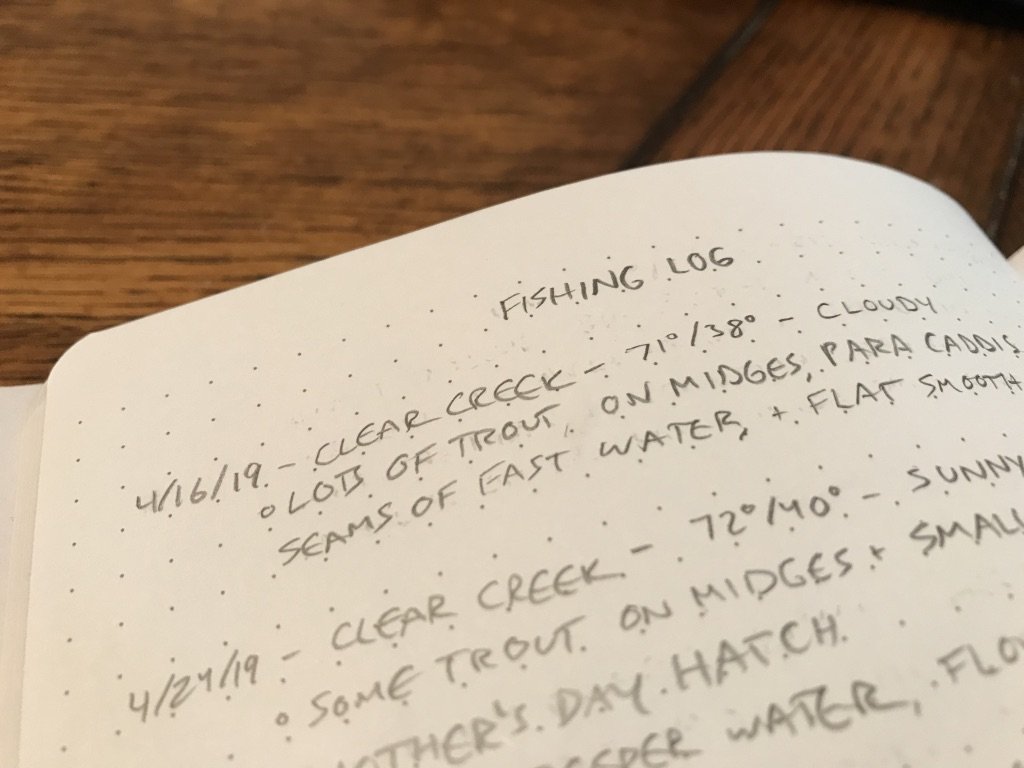How to Keep a Fishing Journal
Keeping a fishing journal is a great way to capture memories, reflect on past adventures, and become a better angler.
Journaling lets your creative side out, with detailed descriptions of your small moments on the water. It can also be a log of relevant information from your trip, allowing you to reference useful tidbits down the road.
There's no single right way to journal about fishing, and trying to follow a rigid set of guidelines that doesn't appeal to you often leads to journaling burnout. Instead, pick the type that suits your needs and don't be afraid to make adjustments as you go.
Decide what you want from your journal
The first step to setting up a fishing journal is deciding what you want from it. If you start a journal without knowing this, you may quickly get bored or burn out. The exact type of journal you choose can be personalized, but there are also a few standard types to start with.
The play-by-play
The first is a standard play-by-play of what went down just so you can remember it. This is an easy one to keep up with because you can usually summarize a day in a paragraph or two. This type might include a quick summary of who all went, what you were fishing for, where you went, and whether you had any luck. The play-by-play is a good option for the average angler who just wants to look back every so often to remember what happened on a trip.
The artsy story
A second option is a more detailed, artsy version of the play-by-play. Instead of writing a paragraph or two covering the essentials, a day may take a page or two to cover in detail exactly what happened from start to finish. In addition to just having more detail, this one may also add in thoughts, reactions, or reflections, and evoke a lot more emotion. Think of the type of fishing story you might read in the Drake or the Fly Fish Journal. These entries tell a story, not just a list of events. This type of journal is great for creative anglers or those who enjoy recalling tiny but special moments on the water.
The reference log
A third common option is a log of practical information to be used again later. This one involves recording data like the date, time of day, weather, species, fishing set-up, and any other practical notes. The main purpose of this journal is to keep important information that can be referenced later to improve success. If you're planning to fish a particular area again, having a record of what worked and what didn't can be really useful.
Obviously, you can also make up your own style, although most journals will fall under somewhere under one of these umbrellas.
Choose your medium
In addition to deciding the content of the journal, you'll need to decide your format.
The two major categories are digital and print, and each has more specific subcategories. Both print and digital have their merits, and you should go with whichever is most convenient and serves the purpose you need.
Digital can be great for some people. You can back it up online, so there's no risk of accidentally losing or destroying the journal. You can also access a digital journal from multiple devices, so you can write whenever the mood strikes. Also, if you're planning to write in the field, carrying a phone may be less cumbersome than carrying a notebook.
On the other hand, print definitely isn't dead in the journaling world. Probably the biggest incentive to traditional journaling is the satisfying feeling of putting pen to paper. While it seems like a minor merit compared to some of digital's pluses, this alone keeps many people hooked on paper journaling. For some, the story feels more alive when written out. In addition, print also benefits from not relying on a battery. A paper journal won't run out of juice. It's also more flexible: you aren't following a set of guidelines or technological restraints established by an app, so you can add drawings, side notes, and anything else that supplements the writing.
Stick with it and adapt
The hardest part about journaling is being consistent. It's easy to keep up with it when you're first starting out and it's still exciting. After a while, though, it may become harder to stay on top of writing. If you notice yourself seeing your journal and thinking, "I'll get to it," odds are you'll get way behind.
I've found that when I see my journal and think to put it off, if I simply pick it up and write a sentence or two, I'm suddenly much more eager to keep going. An object in motion tends to stay in motion, and the more often you write, the easier it'll be to stick with it.
Additionally, being adaptable is vital. When I first started out, I got frustrated when I no longer liked the format I'd been using. I couldn't decide which would be worse: continuing with a format I didn't like, or switching and knowing my journal no longer followed a clean, standard format.
Eventually, I decided to allow myself to switch formats and not stress over the fact that I had lost overall consistency. Now that I've allowed myself the freedom to adjust any entry's format as needed, I feel relieved.
If you start out with print and decide to switch to digital, or start by telling lengthy stories but find you write more often when you keep it short and sweet, don't feel guilty at all about switching formats.

